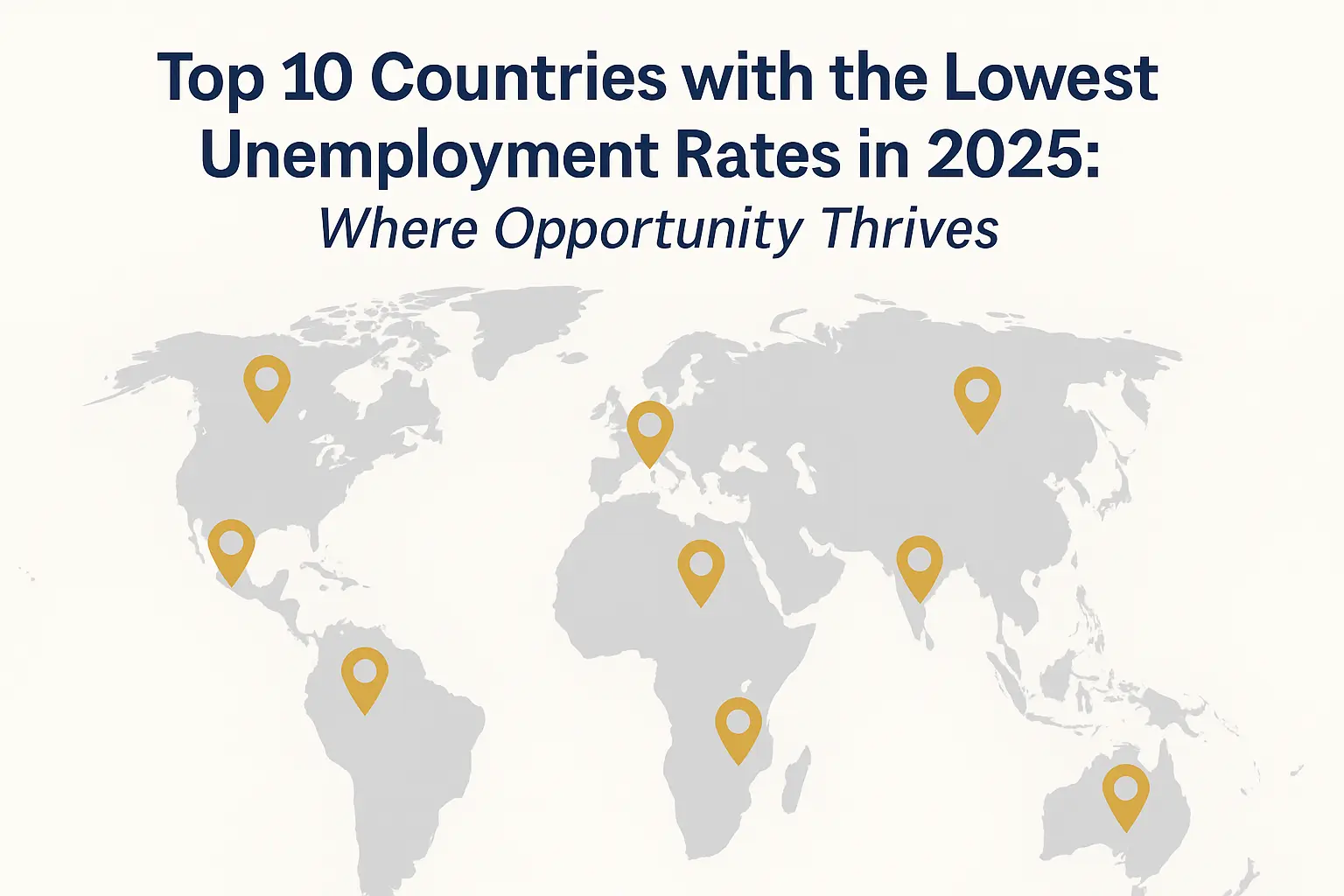A Global Snapshot of Employment in 2025
As we navigate through 2025, the global employment landscape presents a mosaic of resilience and challenge. While some nations grapple with economic uncertainties, others showcase robust labor markets, reflecting effective policies and adaptive economies. Understanding where employment opportunities flourish can offer valuable insights for professionals, investors, and policymakers alike.
Top 10 Countries with the Lowest Unemployment Rates in 2025
Based on recent data, the following countries lead the world in maintaining the lowest unemployment rates:
- Qatar – 0.1%
- Belarus – 0.1%
- Cambodia – 0.22%
- Niger – 0.5%
- Burundi – 0.9%
- Chad – 1.0%
- Thailand – 1.02%
- Faroe Islands – 1.1%
- Laos – 1.2%
- Cuba – 1.2%
Source: wagecentre.com
Exploring the Leaders: What Sets Them Apart?
1. Qatar – 0.1%
Qatar’s economy, bolstered by vast oil and gas reserves, has consistently provided ample employment opportunities. The nation’s strategic investments in infrastructure and diversification efforts have further solidified its labor market stability.
2. Belarus – 0.1%
Belarus maintains a low unemployment rate through a combination of state-controlled industries and policies aimed at full employment. While this approach ensures job availability, it also raises questions about economic flexibility and innovation.
3. Cambodia – 0.22%
Cambodia’s burgeoning textile and garment industry has been a significant employment driver. Coupled with a young workforce and increasing foreign investment, the country has managed to keep unemployment rates remarkably low.
4. Niger – 0.5%
In Niger, a predominantly agrarian economy means that a large portion of the population is engaged in subsistence farming. While this contributes to low unemployment figures, it also highlights the need for economic diversification.
5. Burundi – 0.9%
Similar to Niger, Burundi’s economy is largely based on agriculture. Efforts to develop other sectors are ongoing, aiming to create more varied employment opportunities for its citizens.
6. Chad – 1.0%
Chad’s low unemployment rate is influenced by its reliance on agriculture and oil. However, challenges such as political instability and infrastructure deficits continue to impact its economic growth.
7. Thailand – 1.02%
Thailand boasts a diverse economy with strong sectors in manufacturing, tourism, and agriculture. Government initiatives and a focus on education have contributed to its low unemployment rate.
8. Faroe Islands – 1.1%
The Faroe Islands, with a small population and a focus on fisheries and aquaculture, maintain low unemployment through niche industries and effective governance.
9. Laos – 1.2%
Laos has seen economic growth through hydropower exports and agriculture. Continued investment in infrastructure aims to sustain and improve employment rates.
10. Cuba – 1.2%
Cuba’s state-driven employment model ensures job availability for most citizens. While this results in low unemployment, it also presents challenges related to economic efficiency and innovation.
Broader Implications: What Low Unemployment Rates Indicate
Low unemployment rates often signify robust economic health, effective governance, and social stability. However, it’s essential to consider the quality of employment, wage levels, and job satisfaction. In some cases, low unemployment may mask underemployment or lack of job diversity.
📊 Explore Meaningful Careers on WhatJobs
Low unemployment doesn’t always mean high job satisfaction. It’s important to find roles that offer stability, growth, and purpose.
Discover opportunities across industries that match your skills and ambition—whether you’re seeking better pay, career progression, or a more fulfilling path.
WhatJobs connects you to quality jobs in thriving economies, so you can move beyond just having a job—to building a career.
👉 Browse top jobs in your area now — and take the next step toward meaningful work.Conclusion: Navigating the Global Employment Landscape
The countries leading in low unemployment rates in 2025 offer diverse lessons in economic management, policy implementation, and sectoral development. For job seekers, investors, and policymakers, understanding these dynamics is crucial for making informed decisions in an interconnected world.




